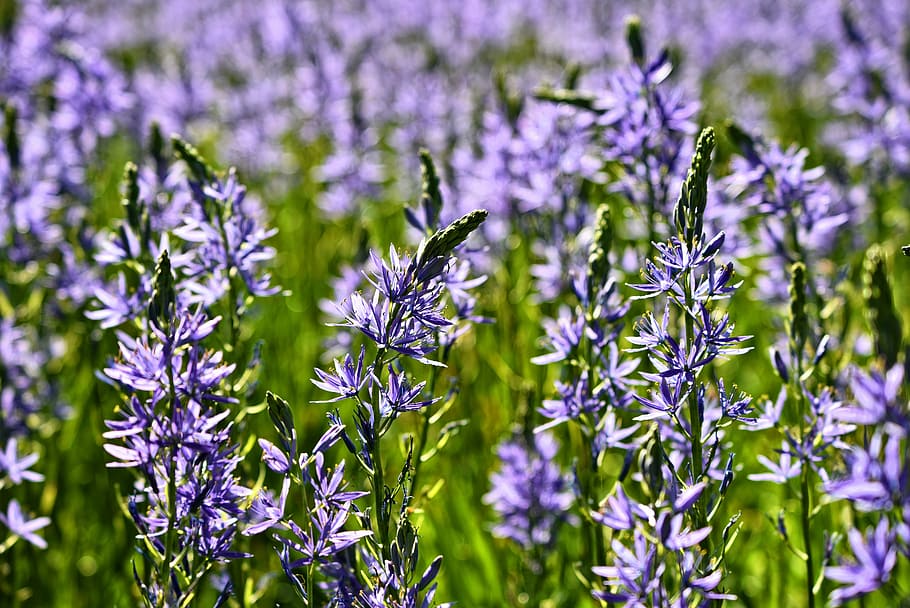How to Grow and Care Bougainvillea Plant [UK]
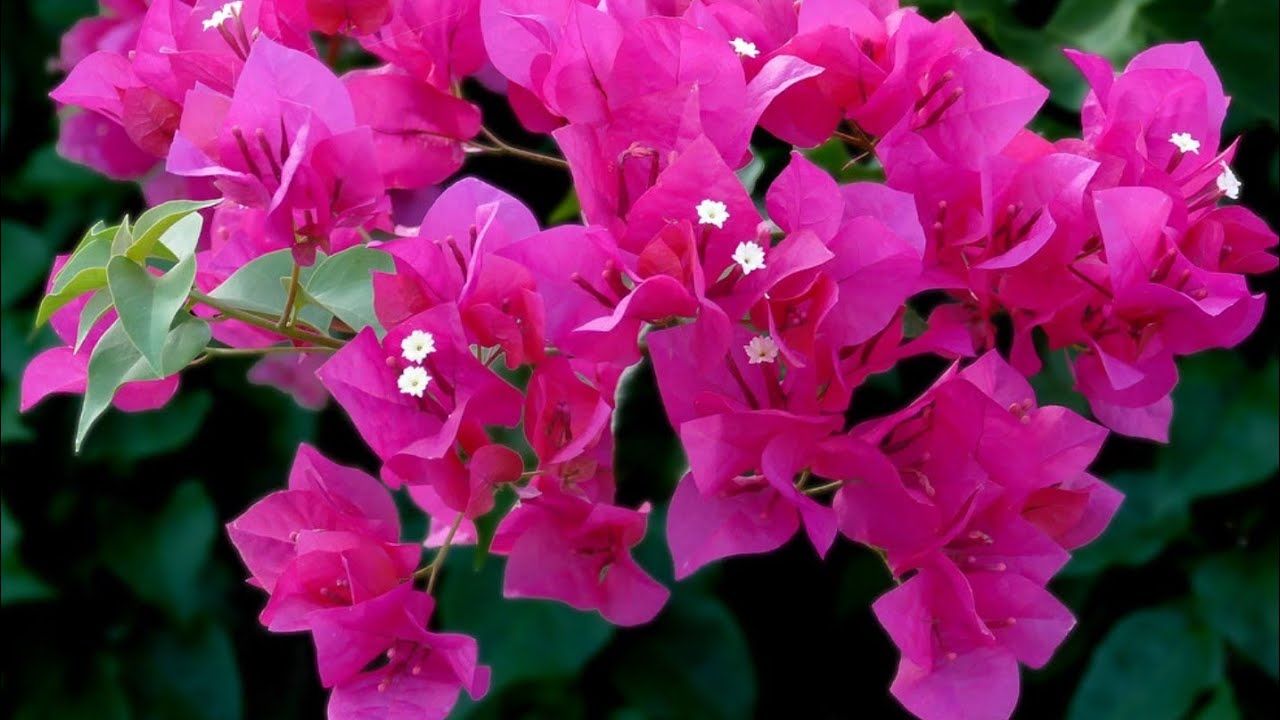
Table of Contents
Bougainvillea is one of the most remarkable and colourful plants seen in the UK. It’s a tropical, shrub-like vine that blooms for straight 11 months of the year. These perennials require large pots and prefer warmer climates. You can sow them outdoors in the summer. But you must bring them inside in winter as they can’t survive the chilly temperatures.
This South American evergreen plant flourishes well when potted in a controlled environment. Regardless, planting them in a heated greenhouse makes up a perfect setting for Bougainvillea in the UK to prosper. The perennial craves infrequent watering with well-drained soil and deadheading at the end of the season. When kept in suitable conditions, the plant regrows every year.
By carefully following the tips below, you can easily grow your Bougainvillea plant resulting in mesmerizing flowers.
How to Grow Bougainvillea in the UK
Bougainvillea plants are undoubtedly a vibrant genus that blossoms in many distinctive colours like pink, orange, and white. These climbing plants have papery leaves, known as bracts, which are more colourful and lasting than their flowers. These bracts also attract good insects to pollinate.
When planting Bougainvillea in the UK, it can be done by following these three simple steps.
Where to Cultivate Bougainvillea
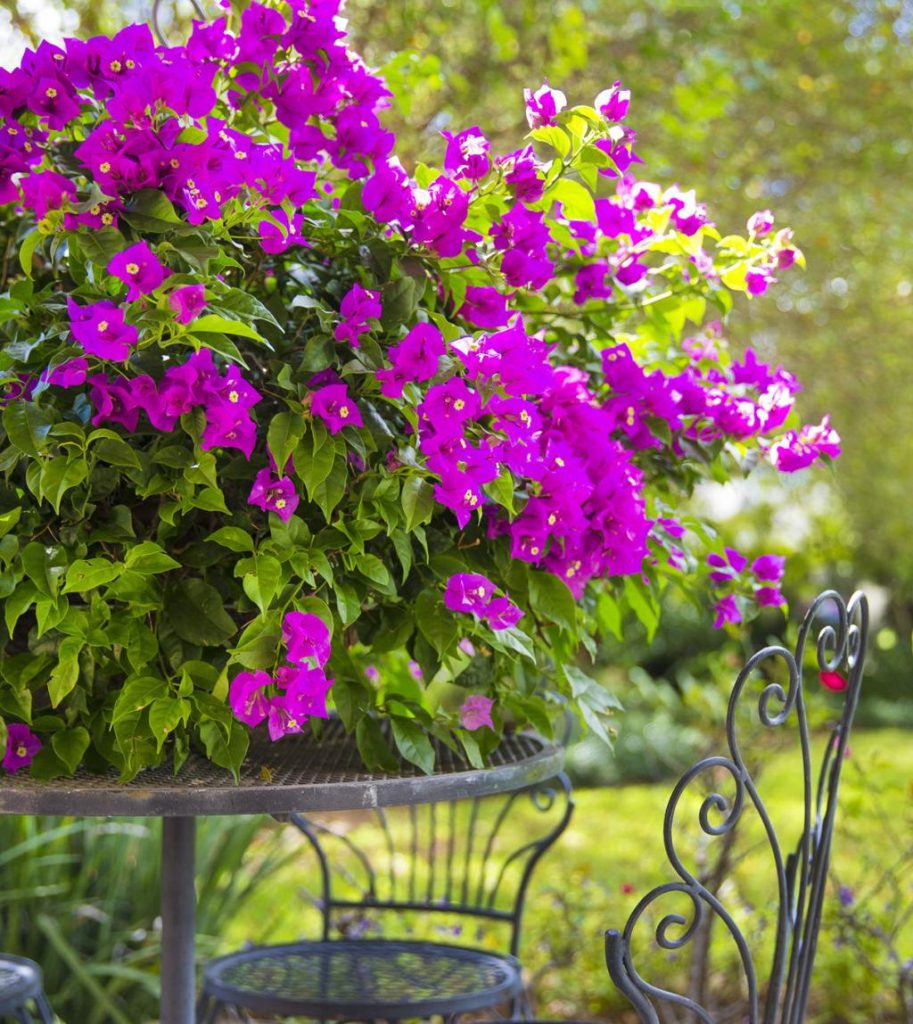
Deciding the ideal spot for Bougainvillea is crucial, as they belong to tropical and sub-tropical parts of America, making them sun-loving plants. So, they do well in tons of sunlight or require at least 6 hours of exposure. When potted in places with higher temperatures and humidity, their growth stimulates significantly.
When to Grow Bougainvillea

Grow these beautiful plants in spring or early summer for the best results. They don’t do well in colder weather, so potting the plant is a sound choice, as you can move it inside when needed. Remember, Bougainvillea are more robust plants requiring larger spaces or wider containers to grow appropriately.
How to Sow Bougainvillea
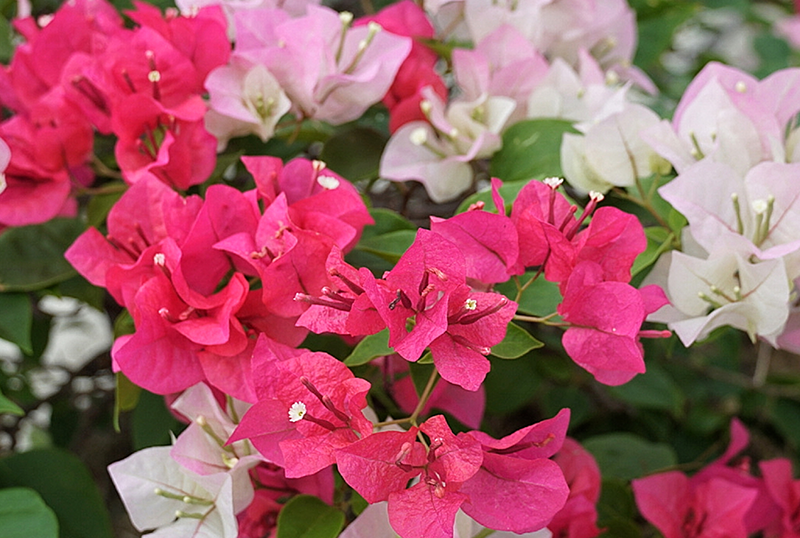
Start by digging a wide planting hole according to the plant’s root ball. Use a well-rotted compost like John Innes 3 and add a high-phosphate fertilizer to the mix. Set the plant inside, cover it with more potting soil, and gently pat it with your hands. The roots are fragile, so don’t damage the plant while potting it. If you are sowing the plant in a container, use the one with an excellent drainage system. When you let them climb a wall, they’ll require training. And you can do so by wrapping it firmly around the base.
Caring Tips for Bougainvillea Plant
Once Bougainvillea is successfully planted, they require certain care and maintenance. Here’s how you can do that-
1. Check the Soil
As the plant belongs to a coastal area, it sows generously in nutrient-rich soil. Waterlogging is a common problem for the plant, so the soil should also have decent drainage ability. Or, you can use homemade soil with peat moss, sand, and perlite. Bougainvillea can withstand higher salt levels. So making the soil slightly acidic, with a pH between 5.5 and 6.0, works well. You can add limestone to increase or sulphur to decrease the pH level as required. Throw in a well-rotted compost and a loam-based fertilizer to provide sufficient fibre.
2. Plant It in Proper Sunlight
The plant grows well in full sunlight when kept outdoors. If potted inside, place it in a sunny spot so it can soak up to a minimum of 6 hours of sun to grow profusely. You can, however, shelter it during solid heat waves that may damage the plant. When hoarding the plant inside or in a greenhouse, always set the temperature above 10 degrees Celsius. Shifting the plant inside in chilly weather would protect your plant from freezing. However, if you don’t want to move it, using a drier compost can safeguard it, but the leaves may start wilting.
3. Watering It in Prudent Way
Watering the plant is a vital process when growing Bougainvillea in the UK. Spraying too much water can halter the flowering, and too little water can lead to soil drying and withering. You must only water the plant to keep it moist, not sog it. Simply stick a finger in the ground a little deeper, and if it feels drier, water the plant. While growing, the plant requires regular watering but once matured, reduce it to every 2-3 weeks. Using pH-neutral rainwater or adding a high-potassium liquid feed to water helps boost flowering.
4. Look for Proper Fertilization
Fertilizing the plant every few months keeps it healthy and blooming longer. Excess feeding can lead to a rapid increase in plant growth. And, if you feel it’s getting out of hand, cut back on the process and prune it. Using organic or specially-curated Bougain fertilizers works best for the plant. When spring comes, feed the plant at least once a year with a slow-release fertilizer instead of high-phosphate. This way, Bougainvillea in the UK grows steadily as the plant is well-fed and nourished.
5. Pruning and Training Techniques
Bougainvilleas will require a trellis for support and training to climb the wall accordingly. Inserting a frame while you pot the plant inside avoids damaging the roots later on. So, put it right behind the plant and loosely tie the vines to it using plant ties. Keep adding more ties as the plant grows, and it will be trained when it matures. Trimming the plant in late winter or early spring encourages newer growth. Cut all the dead leaves or flowers and set the plant according to your liking. Wear gardening gloves and use pruning shears to help maintain proper hygiene.
Different Species of Bougainvillea in the UK
There are 18 species of Bougainvillea plant, but only a few are commonly grown in the UK. Bougainvilleas are divided into taller varieties that expand to 10 m tall and wide. The others are dwarfs that hardly cultivate up to 1 m tall or wide.
1. Dwarf Bougainvilleas

These species are perfect for hanging in baskets or potting them indoors. If you have limited space, look for Pink Pixie, Sunvillea Series or Yani’s Delight flowers. In case you’d prefer a medium one, choose from Bengal Orange, Golden Jackpot and Miss Alice.
2. Tall Bougainvilleas
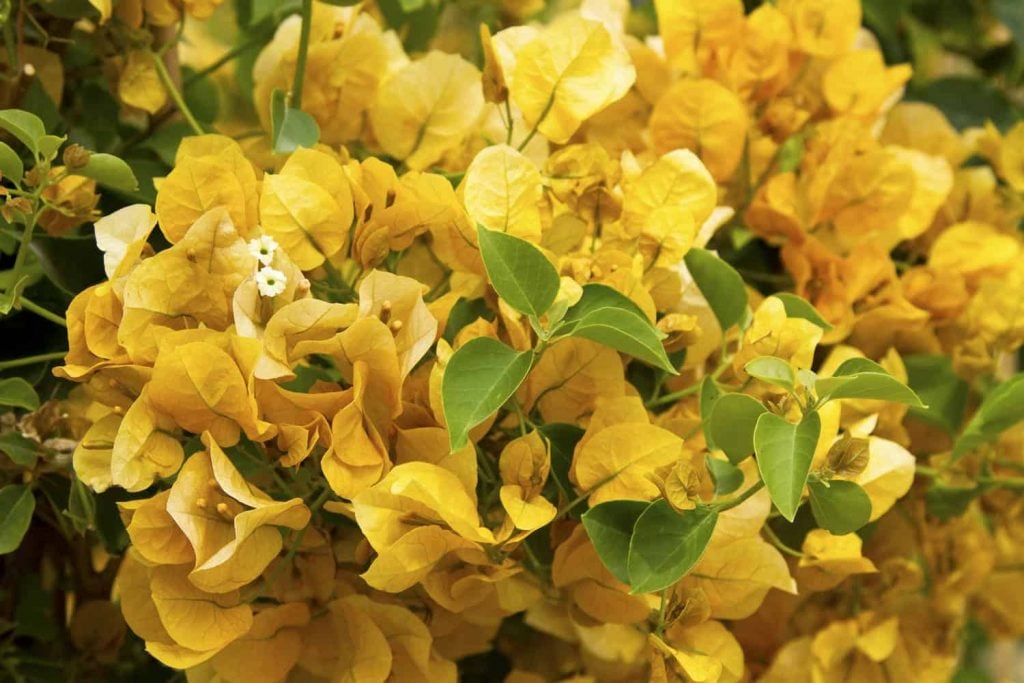
These stunning Bougainvillea plants will fill your garden with striking colours that can be maintained with early spring prunings. Imperial Delight, Purple Queen and White Stripes are medium-sized plants. Whereas Camarillo Fiesta, Barbara Karst and Gold Rush are the tallest ones available. This variety included plants like Blueberry Ice, Bengal Orange and Golden Jackpot.
How to Propagate Bougainvillea

Propagating Bougainvillea can be done in three distinctive ways.
- Semi-Ripe Cuttings:Semi-ripe cuttings are done in summer and are chosen from the season’s growth. Ensure that the cutting base is hard but the tips are still soft. They will take 4-6 weeks to grow into a newer plant.
- Hardwood Cuttings:Hardwood cuttings are done in winter after the leaf starts falling. It is a slower method to propagate but surely a reliable one. It may take around 2-3 months for them to grow.
- Layering:Layering is a process in which a stem produces roots while remaining partially attached to the mother plant. This technique can be done in late winter or early spring and takes up to 2-3 years for newer growth.
Common Problems to Look After
Bougainvillea is usually disease-free and pest-free plants. But, overwatering or lesser light can affect their growth and attract unwanted bugs.
Lower Temperatures

The plant starts wilting and dropping leaves when exposed to chilly climates dropping from 10 degrees Celcius. Simply take the plant inside when the first frost comes.
Overwatering
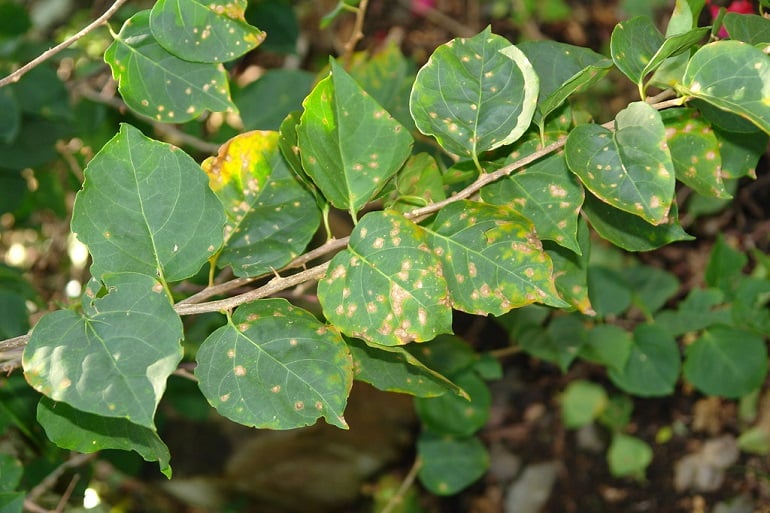
Always check the soil’s moisture before watering the plant. Overflooding can attract fungal diseases, or the roots can rot. So, keep the plant on the drier side for better blooming, but not too dry.
Dehydration
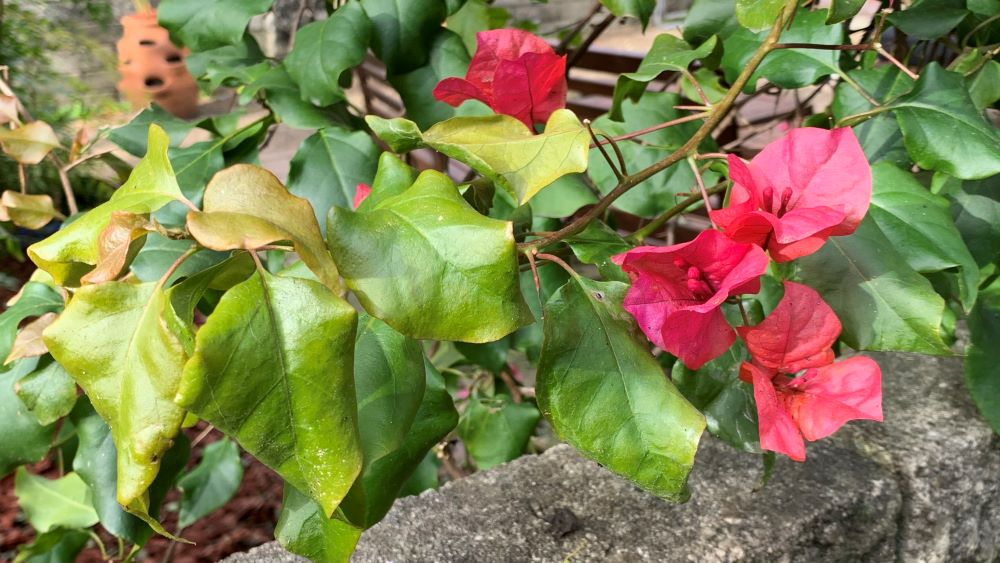
Although Bougainvillea plants require adequate sunlight and watering, too much direct sunlight and less watering may affect them. If your plant’s leaves turn yellow, put them in a sheltered area or check the moisture.
Pests
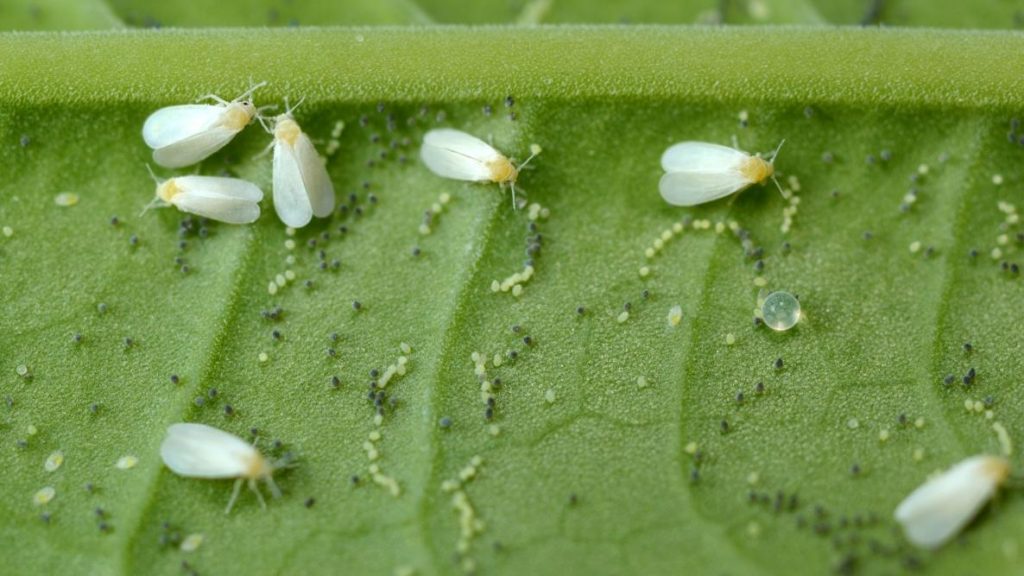
Usually, Bougainvilleas are robust plants, but they can break down in front of some insects like whitefly, aphid or red spider mites. You can spot the tiny white bugs sticking to your plant. Using an organic insecticide can protect your plant.
Summing Up
All in all, having vivid, colourful plants in your house or garden surely adds a glamorous look to your place. And these tropical climbers thrive in a dry, frost-free, sunnier location without much watering. Bougainvilleas hardly require any pruning and are disease-free too. You can even choose from its various species, a smaller plant for indoors and a bigger one for outdoors. What else do gardeners want? When it comes to maintaining the plant, feed it every few months, use well-drained soil, and train it to climb walls or trellis. You can even easily order the
Bougainvillea in the UK online or visit your nearest nursery to purchase one. And enjoy the picturesque view while sitting in your garden.
Frequently Asked Questions
Why Is My Plant Withering Flowers?
There could be various reasons for your plant to be dropping flowers. It could be because of the lower temperatures or your plant might be dehydrated. If the soil dries out fully, give it good moisture to return to blooming colourful flowers.
How Can I Protect Bougainvillea from Frost?
Bougainvillea in the UK prefers a warmer climate, as they don’t do well in winter. So, if left outside, they may suffer severe damage. To protect them, potting them is a good idea, as you can move the pot inside when the temperature drops.
How Much Water Does Bougainvillea Need?
It’s a little hard to determine whether your plant requires more water just by looking at it. Instead, stick a finger in the soil, and if it feels dry, water the plant. However, don’t water it if it feels damp, as it will sog the soil.
Are Bougainvilleas Deer-Resistant?
Yes, these plants are deer-resistant, as deer will not eat Bougainvilleas. However, they can still damage your plant by crushing or walking over it. So, if you stay at such a place where deers stroll away, having a deer fence will keep them out.
Why My Bougainvillea’s Leaves Are Curling Up?
Curled-up leaves usually mean your plant has caught a bug. Check the top and downside of the leaves carefully, and if found any, remove them instantly. Using an insecticide can help keep them away. And prune the affected area for fresher growth.




